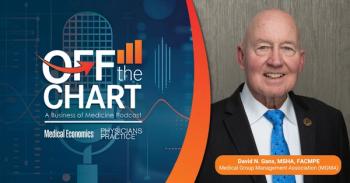
Motivating Your Medical Practice Staff
Contrary to popular belief, money and praise are not the best motivators for medical office staff. Here are examples of effective motivation you can use today.
Unmotivated staff is a seemingly intractable problem for many medical practices. Direct consequences include a significant and negative impact upon practice profitability and physician satisfaction. Traditional remedies of cash and cash equivalents can be expensive, and any improvements in motivation are short-lived at best.
A lack of employee investment in and engagement with the job is the root of the staff motivation problem. The most effective motivators, therefore, are more closely related to the staff's work than spot bonuses or gift cards. Cultivating staff engagement seldom involves any out-of-pocket expenses; it generally produces objective improvements in practice operations and engaged staff is equipped to reinforce its own good behaviors.
Here are three examples a physician can promote staff engagement in the work of the practice:
Suspend judgment, ask the motivation, and listen to the answer.
When someone has done something that makes no sense at all, the automatic response is often to ask: "What were you thinking?' If the tone and volume indicate the actor is probably too stupid to survive in the modern world, a valuable motivational opportunity is lost. If, on the other hand, the question is more than rhetorical and genuinely seeks information, a conversation can begin.
Why it promotes staff engagement:
• The serious question assumes the staff member is competent and conscientious.
• It acknowledges that she just might have information the physician does not.
• In the exchange, the physician demonstrates that the staff person is worth an investment and her opinion is respected.
Ask for help.
Every office has things that are not working right. These can be great opportunities to improve office operations and give staff an opportunity for meaningful success.
NOTE: The projects are to be accomplished in addition to regular duties.
The physician, preferably with staff input, can define a project:
• What's not working (charts cannot be located, phone messages are backing up, patient vitals are not reliably recorded, etc.)
• One or more specific, desired outcomes
• Constraints on any proposed solutions
• A deadline to report at least one proposed solution
Why it promotes staff engagement:
• The task is new and challenging.
• It engages staff as partners in improving practice operations.
• Success is a powerful, self-reinforcing motivator.
• Staff gets a type of visibility with the physician that is not generally otherwise available.
Some caveats:
• Start small. Staff probably has little experience with formal problem solving.
• Require meaningful improvement.
• Be satisfied initially with something less than ideal. Refinement can come in successive iterations.
• Do not expect or demand that staff members come up with the physician's solution. As long as they stay within the parameters, let them own the project.
In a complaint about a staff member, gather information before casting blame.
When a patient says the receptionist was rude, it is always appropriate to apologize and promise to look into it. What is ill advised is assuming the receptionist was rude without hearing her side of the encounter. She may have been rude, and the physician will need to deal with it. The important point, in terms of motivation, is that the receptionist was not in the wrong by definition.
Why it promotes staff engagement:
• People need to feel safe to do their best work and they are loyal to those who protect them from unreasonable attacks.
• The physician can use the opportunity to communicate what she would have preferred to happen in the encounter. Staff is generally grateful for information that makes them better able to meet expectations.
• It is an opportunity to reinforce the idea that we are all in this together.
Engaged medical practice staff are self-motivated. The most effective methods to engage staff in a medical practice are to respect their dignity and intelligence, to give them a chance to improve and contribute, and to demonstrate that helping them improve their work is worth an investment of time and attention.
None of these requires a cash outlay, but the monetary rewards to the practice are significant. The practice will be more effective, efficient, and profitable. After truly unsatisfactory staff has decided to leave, voluntary staff turnover will be all but eliminated. The practice, in general, will be a much happier place to be.
Find out more about Carol Stryker and our other
Newsletter
Optimize your practice with the Physicians Practice newsletter, offering management pearls, leadership tips, and business strategies tailored for practice administrators and physicians of any specialty.











